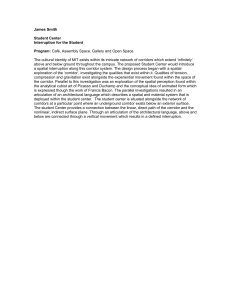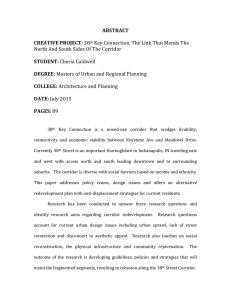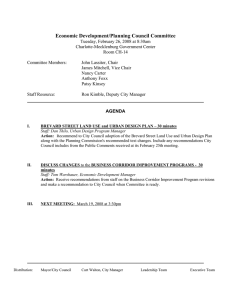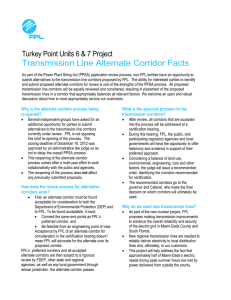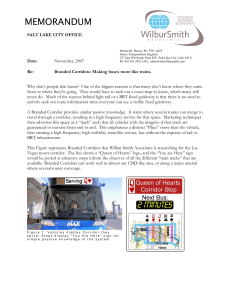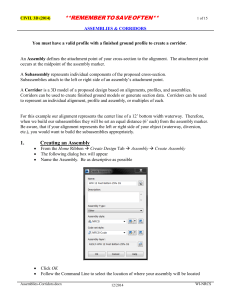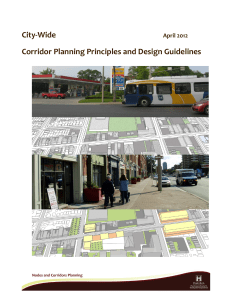Accessible Indoors
advertisement
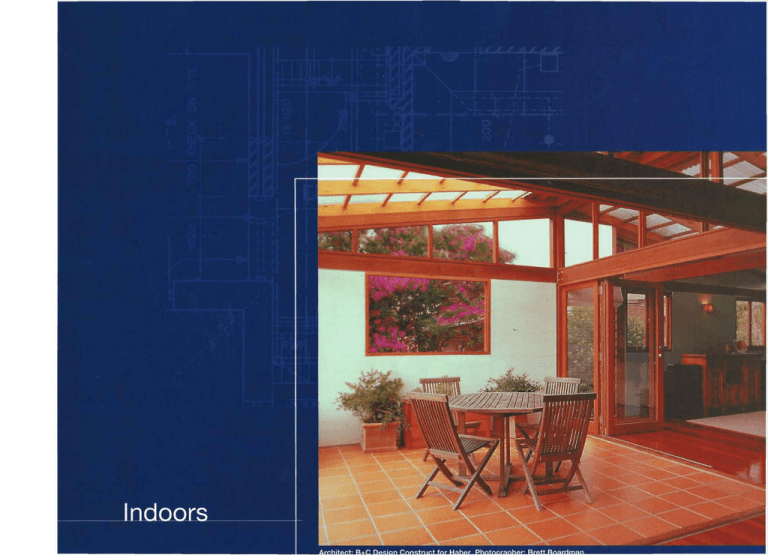
User- friendly housing should be both
aesthetically pleasing and funct ional. To
achieve this the spaces inside a house
need to be easy to move around. The
layout needs to make life easy by
connecting functional dest inations such
as laundry and clothesline, or carport
and kitchen. These logical connections
are usually made in home designs but
often the corridors and other circulation
routes are too narrow or have pinch
points that restrict access. One of the
most effective ways to solve these
access problems and to maxi mise the
use of available space is to emp loy an
open-plan design.
For example, a person using a
w heelchair may need greater
clearance between items of furniture
and doorways that are designed to
enable their passage. The goal is to
plan the space well for its function and
intended users.
The most accessible layout for a
house is one with generous open
spaces and as few passageways as
possible. Hallways, especially narrow
corridors, can be difficult for many
people to navigate.
Figure 4 1 The dimensions of an offset
hinged door that allows room for a
wheelchair- user to move beside and through
500 mm prefcrre
Room to move
470
800
minimum
minimum
110mm
A home designed with good access in
mind is more liveable for everyone and is
likely to meet the needs of its inhabitants
as the years pass. The improved access
will benefit children, elderly people and
those with disabi lities.
Specific provisi on may be needed for a
person w ith a pat1ic ular disability.
additional pull
handle will assist
some users
29
900 mm minimum
1200 mm preferred
the manoeuvre can be
made much easier by
champfering the inner
corner
possible damage to
walls
Plan for a small house
that allows easy access
An existing corridor
can be made more accessible by
cutting the corner
People using wheelchairs may
experience difficulty when making
turns in a corridor or turns from a
corridor into a room if the corridor and
door openings are not sufficiently
wide. Whether building a new home or
renovating, it is useful to consider how
the space can be used to maximise
access between rooms and to outdoor
areas. Place furniture where it will not
compromise circulation space or
manoeuvrability throughout the house.
30
Figure 4.2 illustrates the layout of a
house designed for easy movement
between rooms.
If corridors are necessary, they should
be wide to facilitate turns and changes
in direction. It is difficult for people in
wheelchairs to manoeuvre down a
900mm wide corridor, or round a tight
90° corner. Such narrow corridors
should only be used for short distances.
1<900 mm minimum ~
1200 mm preferred
Where it is not possible to design a
corridor of suitable width and the corridor
has a sharp turn, it may be possible to
chamfer the corner as illustrated in figure
4.3 to make it accessible.
~
FiiJW"(' 4. Preferred minimum space
requirements to turn 90° through a
door from a corridor
T
the width of t he door opening
must be increased if the
passageway is na rrow
A
1200
1110
1055
\
B
I
\
cl~r
"­
Figure 4.': The end of a corridor
opening
"­
'-......
~
A
B
800
900
1000


